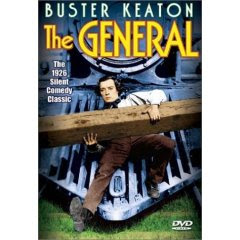
Afro-Virginians Attitudes on Secession and Civil War, 1861, Ervin L. Jordan, Jr., in Virginia At War, 1861William C. Davis and James I. Robertson, Jr., University of Kentucky, 2005, pp. 89-112.
Virginia, a bi-racial commonwealth of 500,000 blacks and 1,000,000 whites in 1861 "had more black inhabitants than anywhere else in North America and the most enslaved blacks in the Western Hemisphere except Brazil." Of the Confederacy's 3,700,000 African Americans, Virginia was home to one-sixth of them. The explore their feelings, attitudes and commitments is a difficult thing to do. Very little first-hand documentation of the blacks' voices exists. The record of black voices is mediated by the whites recording of the words and behaviors. In the Southland, the nearly complete lack of African American editorial voices, diaries, letters, makes discovery of African Americans hearts and minds inherently hard work for the researcher. (pp. 89-90)
"Possibly the best means of ascertaining black Virginians' collective and individual perspectives about the times is to examine their works and deeds concerning slavery, free blacks, and Afro-Confederates; there surreptitious longings for freedom as manifested by running away; their relations with the Union army; and limited attempts to rise up against their racial suppressors." The lack of slave revolts is not a sign of lack of desire for freedom. While the Brown raid on Harper's Ferry, VA in October 1859, exposed the climate of fear among slaveholders, the raid came is signify to blacks the coming of a possible future, a meteor of war to use Herman Melville's term. (pp. 90-92)
After Virginia seceded on April 17 and the voters ratified the decision in mid-May, the black servant who daily raised the national colors over the state capitol, rescued the Stars and Stripes from the trash bin and hid it under his bed for the duration of the war. On the other hand, a slaveholder asked Jefferson Davis "Can we really expect the Negroes to stand with us?" Several slaveholders forced their slave families to emigrate to Missouri or Texas. Jordan, the essay's author, states "Confederate Virginians generally regarded slavery and white supremacy as a fundamentally natural order and divinely ordered way of life." Alexander Stephens viewed the Confederate Revolution as a keeping the world right side up and the Northern aggressor as desiring to turn the natural order of things upside down. For Stephens, slavery was the cornerstone of social, political and economic Confederate temple.(pp.93-94)
Desiring freedom, the slaves understood the constraints of the racist society in which they lived and which employed personal violence against them. Free blacks in Virginia faced a two horned dilemma: stay free and avoid the suspicion that they would become the Nat Turners of their day. The slave Nat Turner led a three day massacre in southeastern Virginia in 1831 which accomplished the deaths of over sixty whites and the swift, white response of executing well over 100 slaves.
Free blacks became Afro-Confederates as a means of preserving what freedoms they had.
They volunteered for work details building forts, served in CSA regiments as musicians and as commissary aides. "Afro-Confederates' scruples were either coerced, feigned or sincere," Jordan states. The two-horned dilemma is apparent is the instance of Mortimer Raymond, a black Richmond police informer who "reported on black offenders" but to his own astonishment was sent to the whipping post for the crime of associating "with a white woman upon terms of closer familiarity than the law permitted." His loyalty to whites did not mean that he could exercise a freedom of association with them. (95-97)
During the autumn of 1861, the enthusiasm of Afro-Confederates began to wane. Harsh camp treatment, broken promises and forced labor diminished the early 1861 desire to please and fit into the new Confederate society. Rumors of white led slave revolts were common throughout 1861; arrests and punishments with little or no evidence of revolt were just as common. Jordan states that 1861 closed Afro-Virginians, whether slaves, freemen, or serving in CSA forces, looked to the future "with pragmatic hope." (104-105)















































